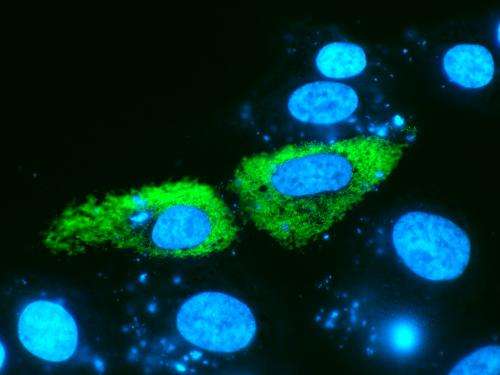Researchers show that lipid nanoparticles are ideal for delivering genes and drugs

Researchers from Basque Public University are using nanotechnology to develop new formulations that can be applied to drugs and gene therapy. Specifically, they are using nanoparticles to design systems for delivering genes and drugs; this helps to get the genes and drugs to the point of action so that they can produce the desired effect.
The research team has shown that lipid nanoparticles, which they have been working on for several years, are ideal for acting as vectors in gene therapy. Gene therapy is a highly promising alternative for diseases that so far have no effective treatment.It consists of delivering a nucleic acid, for example, a therapeutic gene, to modulate the expression of a protein that is found to be altered in a specific disease, thus reversing the biological disorder.
The main obstacle is that the genetic material cannot be formulated in conventional pharmaceutical ways, because it becomes degraded within the organism and cannot perform its function. To overcome this obstacle, viral vectors are normally used and they are able to deliver the therapeutic gene to the cells in which it has to act. However, as Dr Alicia Rodriguez explains, "viral vectors have a great drawback because they have a great potential to develop tumours. That is why there is a lot of interest in developing non-viral vectors, like vectors based on lipid nanoparticles."
"In this respect," adds Dr Rodriguez, "we have for several years been working to develop formulations for treating degenerative retina diseases, diseases for which there is currently no effective curative or palliative treatment and which causes blindness in the patients who in many cases are very young people. "The research they have done has borne fruit already, and they have in fact managed to develop a vector capable of making a protein express itself in the eyes of rats after ocular delivery. The work has produced two patents and various papers published in top scientific journals, like Human Gene Therapy.
Aim: To improve drug absorption
Another application of lipid nanoparticles is to develop new formulations to deliver drugs that are not particularly soluble or which are difficult to absorb. Dr Rodriguez explained the problem with these drugs:"40% of the new pharmacologically active molecules are reckoned to be insoluble or not very soluble in water; that prevents many of these potentially active molecules from ever reaching the clinic because of the problems involved in developing a safe, effective formulation."
The Faculty of Pharmacy's research team has shown that the strategy of encapsulating drugs of this type in lipid nanoparticles is effective: "They are spheres made of lipids and they have very small particles that encase the drug. That way, the absorption of the drug given orally can be increased," points out Dr Rodriguez.
Part of the research was done in collaboration with the research team led by DrVéroniquePréat, of the Catholic University of Louvain in Belgium. There they studied the capacity of the nanoparticles to pass through the intestinal barrier and therefore increase the permeability of the drug. The results of this work have been published in the Journal of Controlled Release, a leading journal within the specialty.
Furthermore, while considerable advances have been made in both areas (vectors for gene therapy and improvement in insoluble drug absorption), the researchers in the Pharmacokinetics, Nanotechnology and Gene Therapy team are working in a third area linked to hepatitis C in which they also hope to achieve positive results.
















